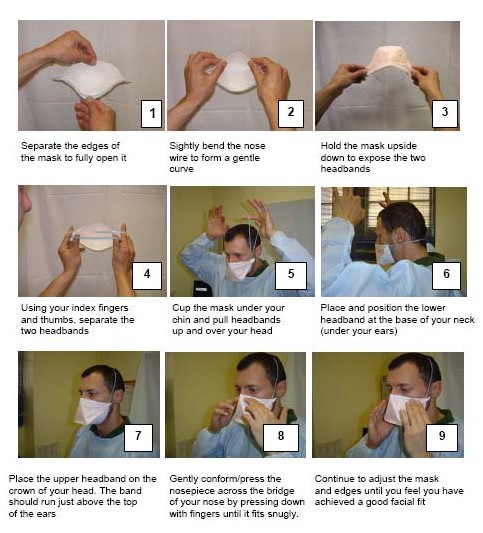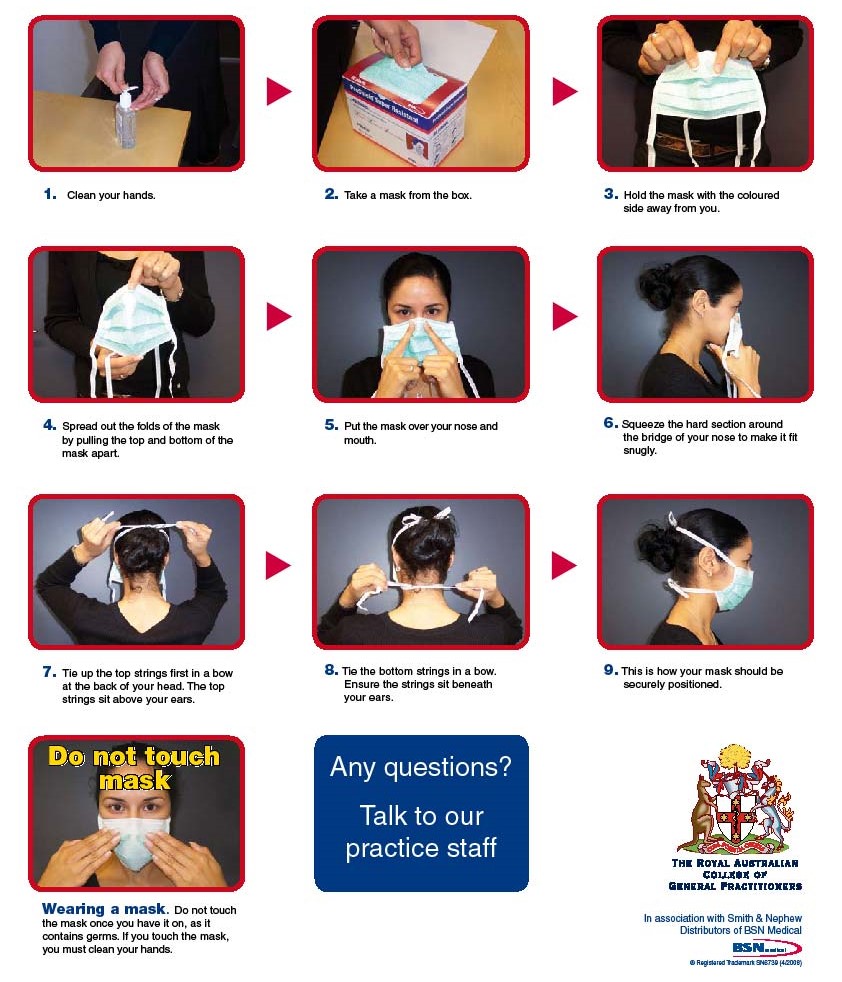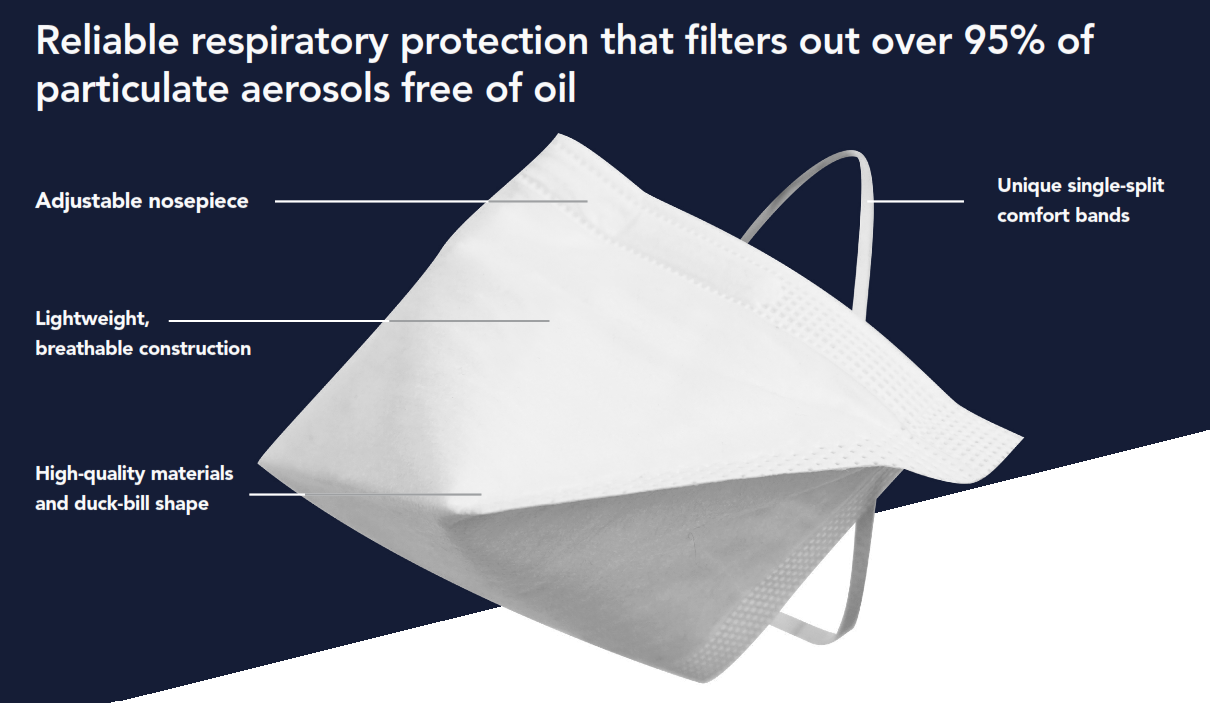Some useful information about Face Masks-Surgical-Procedure & N95 Respirator masks.
The difference between Face Masks N95/P2 Classification.
The Difference between the N95 and the P2 classification for Respirator face masks is the N95 is the NIOSH (USA testing requirements.) and the P2 represents the EC (European testing requirements). In practice, these differences have resulted in no impact on the level of protection to the wearer.
The summary of tests published in the Oxford journal is under-listed.
Comparison of Nano-particle Filtration Performance of NIOSH-approved and CE-Marked Particulate Filtering Facepiece Respirators.
“The National Institute for Occupational Safety and Health (NIOSH) and European Norms (ENs) employ different test protocols for evaluation of air-purifying particulate respirators commonly referred to as filtering face piece respirators (FFR). The relative performance of the NIOSH-approved and EN-certified ‘Conformité Européen’ (CE)-marked FFR is not well studied.
NIOSH requires a minimum of 95 and 99.97% efficiencies for N95 and P100 FFR, respectively; meanwhile, the EN requires 94 and 99% efficiencies for FFRs, class P2 (FFP2) and class P3 (FFP3), respectively.”
Published by Oxford University Press on behalf of the British Occupational Hygiene Society https://annhyg.oxfordjournals.org/cgi/content/abstract/53/2/117
Donning and Fit checking “Achieving the perfect fit”
The fit of the N95/P2 or any filtration mask is important. Remember that there are two (2) sizes available medium and Small size. The medium size is for a normal adult and the small size is for a child or small adult size
Fit Checking an N95 Face Mask
- A “fit Check” should be performed each time a Face mask is donned. To ensure a protective level is achieved.
- Fit checking is achieved by firmly inhaling and exhaling when the N95 mask has been donned correctly.
- The mask should collapse and then inflate with each inspiratory and expiratory effort. This will indicate a correct fit check has been achieved.
Illustrations and further information is available on the websites listed below.
– http://www.racgp.org.au
How to don an N95/P2 Face mask
“Achieving the perfect Fit” – Donning and Fit Checking instructions for P2 (N95) Mask
- Separate the edges of the mask to fully open it
- Slightly bend the nose wire to form a gentle curve
- Hold the mask upside down to expose the two headbands
- Using your index fingers and thumbs, separate the two headbands
- Cup the mask under your chin and pull headbands up and over your head
- Place and position the lower headband at the base of your neck (under your ears)
- Place the upper headband on the crown of your head. The band should run just above the top of the ears.
- Gently conform/press the nosepiece across the bridge of your nose by pressing down with your fingers until it fits snugly.
- Continue to adjust the mask and edges until you feel you have achieved a good facial fit.
Now it’s time to do a fit check.
- Gently inhale. When you breathe in, the mask should draw in slightly towards the face and collapse.
- Gently exhale. The mask should fill up with air. it is important at this stage that there is NO air leakage around the edges of the mask.
A fit check should be done each time a P2 (n95) mask is worn.
If you have not achieved a successful fit as instructed above, it is important that you seek advice or have someone assist you with fitting and checking your mask, as an incorrectly fitted mask will not provide you with the intended level of protection.

How to don a surgical “Tie Back” Face Mask
To stop germs from spreading, you may need to wear a mask. Here are some quick tips and instructions on how to use put on a mask right away.
- Clean your hands.
- Grab a mask from the box.
- Hold the mask with the coloured side away from you.
- Spread out the folds of the mask by pulling the top and bottom of the mask apart.
- Put the mask over your nose and mouth.
- Squeeze the hard section around the bridge of your nose to make it fit snugly.
- Tie up the top strings first in a bow at the back of your head. The top strings sit above your ears.
- Tie the bottom strings in a bow. Ensure the strings sit beneath your ears.
- Ensure that the mask is seated securely and remember not to touch the mask once you have it on, as it contains germs. If you touch the mask, you must clean your hands.

Questions & Answers
Dr. Ray Marusyk, Director of Research & Development, priMED
What is the purpose of a medical-surgical face mask?
In the OR, surgical masks protect the sterile field from possible contamination,
primarily as a result of coughing, sneezing, or talking. A mask also protects the
clinicians from the byproducts of surgical procedures such as bone chips, splashes
of body fluids, and smoke plume resulting from laser or electrosurgical techniques.
Outside of the OR masks are used for standard precautions to protect clinicians and
patients from pathogens that may spread by blood or other body fluids, secretions,
or excretions. Surgical masks are effective against droplet transmission.
What tests or ratings should I rely on to ensure my mask is safe?
Specifications developed by the American Society of Testing and Materials (ASTM) are generally accepted as the industry standard. Beware of mask ratings that do not follow ASTM guidelines.1
BFE (bacterial filtration efficiency) measures how well the mask filters out bacteria when challenged with aerosol-containing bacteria. ASTM specifies testing with a droplet size of 3.0 microns containing Staph. aureus (average size 0.8 microns). Some manufacturers use the Modified Greene & Vesley method to determine the BFE rating. This method is NOT recommended by ASTM for product comparison or evaluating consistency.
PFE (particulate filtration efficiency) measures how well a mask filters out particles such as viruses and other sub-micron particles. The higher the percentage, the better the mask efficiency. ASTM requires testing with a particle size from 0.1 to 5.0 microns. It is important to note the size of the test particles used. Most manufacturers test at the smallest size of 0.1 microns, but others use a larger particle size (e.g. 0.6 to 1.0 μ) thus producing a misleading PFE rating when compared to testing at 0.1 microns.
Delta P (pressure differential) measures the air flow resistance of the mask and is an objective measure of breathability. The higher the Delta P value, the harder it is for the wearer to breathe. Masks with a Delta P over 5.0 are considered too “hot” for general medical or surgical use, whereas masks with a Delta P under 2.0 are considered “cool”.
Fluid resistance reflects the mask’s ability to minimize the amount of fluid that could transfer from the outer layers through to the inner layer as the result of a splash or spray. ASTM specifies testing with synthetic blood at pressures of 80, 120, or 160 mm Hg to qualify for low, medium, or high fluid resistance.
Which is more important, BFE or PFE?
The combination of BFE and PFE testing relates to protection against bacteria and viruses. Although each is important, PFE is usually a better indicator of protection level due to the smaller particle size used for testing. A mask with a BFE value of 99% at 3.0 microns may provide less protection than a mask with a PFE of 96% at 0.1 microns. Do not be misled by high BFE/PFE or “filtration” values without knowing the specific test parameters.
How long is my face mask effective?
The filtration efficiency and protective ability of a face mask is compromised when the mask becomes wet, torn or dislodged. If the mask cannot be easily re-adjusted or becomes wet by overt breathing or fluid insult, it should be replaced.
Why is the fit of a mask important?
A mask is only as effective as its fit. There should be no gaps along the side or under the chin that would allow air and droplets to bypass the filter medium. The mask should always be properly adjusted to fully cover both the mouth and nose. A well-fitting mask stays in place over the nose and cheeks and even a regular mask will prevent fogging of eyeglasses if it fits properly.
How do I ensure a good fit?
There are several things that contribute to a good fit. The most important consideration is the nosepiece. It should mold over the nose and cheeks and maintain its shape over time. It should not kink or break when adjusted. Individuals with wider faces should select a mask that ensures full coverage over the face and under the chin. The upper tie should sit at the crown of the head, and the lower tie should be tied behind the neck to hold the sides of the mask against the face to prevent any gaping.
What else should I know about face masks?
All individuals using face masks must be aware of the protective capabilities of the mask being worn. Health care workers should assess their risk of exposure to blood, body fluids, excretions, and other potential hazards; and choose their mask accordingly.
As part of PPE (personal protective equipment), a face mask is considered to be contaminated once it has been used, and should be discarded immediately. A mask should be removed by the edges or the ties rather than the front panel
Downloads
References
- ASTM – American Society of Testing and materials. Standard Specification for Performance of Materials Used in Medical Face
Masks F2100-04. Standard test methods: F2299-03, F2101-01, F1862-00a (January, 2006) - CDC – Centers for Disease Control. Guideline for the Selection and Use of Personal Protective Equipment (PPE) in Healthcare
Settings. (June 2004) - OSHA – United States Occupational Safety and Health Administration. 1910.1030 Blood borne Pathogens Standard (2002)
- WHO – World Health Organization. Practical Guidelines for Infection Control in Health Care Facilities, (January 2005)


Write a comment
You must be logged in to post a comment.